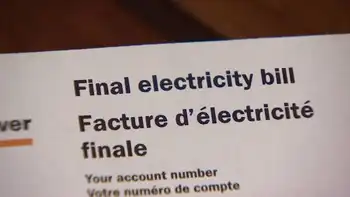Cash-strapped farmers agree to solar
By
Protective Relay Training - Basic
Our customized live online or in‑person group training can be delivered to your staff at your location.

- Live Online
- 12 hours Instructor-led
- Group Training Available
The 47 square-miles of land proposed for the Westlands Solar Park in remote Kings and Fresno counties is just one of dozens of unfinished solar projects in California, but renewable energy analysts say it is a rare one that enjoys the broad support of environmental groups such as the Sierra Club, powerful agriculture interests and state government.
Thousands of solar panels would be located on and near the salty-white, fallowed farm land, most of which is owned by the Westlands Water District, the largest such district in the country comprised of 600,000 acres of San Joaquin Valley farmland.
Once completed, the first chunk of solar proposed for the site — the total size of which is roughly that of San Francisco — could generate up to 1 gigawatt of power, or enough to energize up to one million homes.
"I think a better fit (for the land) is farming, but we have what we have and you go from there," Westlands spokesman Sarah Woolf said.
The embrace of solar power as a new cash crop comes at a time when the district is struggling with mounting debt.
A decade ago, Westlands floated a bond to buy 100,000 acres of farmland where poor drainage had created a salt buildup called selenium, making the land unusable for growers. But with the salty land came water rights, so Westlands bought it so it could divert the water allocations to more productive farms.
Since then, drought and environmental issues have cut revenue to Westlands by reducing the amount of water it can sell to members, who range from corporate giant Harris Farms to family farming operations. Over the past two years, Westlands has tripled farmers' assessments to repay bonds when they can least afford it.
Westlands now sees solar power as a way to put the land back to work.
"(Solar is) a natural fit, it works," Woolf said. "But the underlying motivation is we need to figure out a way to repay the debt."
Now, with Mojave Desert solar projects shrinking in number because of recent proposed legislation by U.S. Sen. Dianne Feinstein, D-Calif., that would create two new national monuments there, Woolf said the valley has become "the prime location for solar."
The district has said it is also open to other types of energy development, including nuclear.
Environmentalists like the site for solar panels because it had been intensively farmed for decades, so it does not contain habitat for endangered species, an issue that has stalled projects in the sunnier Mojave.
"In this part of the world it's not often you find common ground between the water district, landowners and environmentalists, and this is a project that seems to have this potential," Barry Nelson, senior policy analyst at the Natural Resources Defense Council, said.
Another plus is the project's proximity to transmission lines and substations that could deliver energy produced at the site to homes throughout the state, said Daniel Kim, principal partner at Westside Holdings, the private investment group that has a lease contract with Westlands and neighboring farmers.
Also, as utilities seek renewable energy to meet the state's goal of getting one-third of its power from renewable sources by 2020, the California Energy Commission has identified a number of zones where large-scale projects can be developed. The land that would be used by Westlands Solar Park is included in these identified areas, which means some regulatory hurdles already have been met.
Despite the positive reaction to the project from disparate groups, the solar park has a number of hurdles to overcome, including getting through the regulatory hurdles associated with getting built new power lines and substations that will be needed to deliver the power.
Kim's group is working on negotiations with utility companies, who would need to build the transmission infrastructure upgrades before the site's potential can be realized.
Still, renewable energy experts say the project is promising, partly because landowner Westlands is a public agency operating under state authority, so many of the regulatory issues bogging down other large-scale solar projects do not apply.
The path to the finish line is more clearly defined here than perhaps any other project in the state right now, said Carl Zichella, Sierra Club's director of western renewable programs.
"This particular idea of using retired agricultural land for large scale renewable energy development... has a lot of interest," he said.
Despite the area's sun potential, large-scale solar projects had largely failed to gain traction in the San Joaquin Valley because of Westlands' disinterest and a focus by developers on the more sunny Mojave.
"The whole idea of farmers letting go of these farms is not easy," Kim said. "When you're a third generation farmer, it's not a decision taken lightly."
But with the more sunny desert sites mired in a political, regulatory and environmental morass, the Valley's solar value has increased.
"Lo and behold, three years later (desert sites) are far less desirable because the desert has tremendous ecological diversity and a lot of stake holders who don't want to see desert with a lot of solar panels," Kim said.











